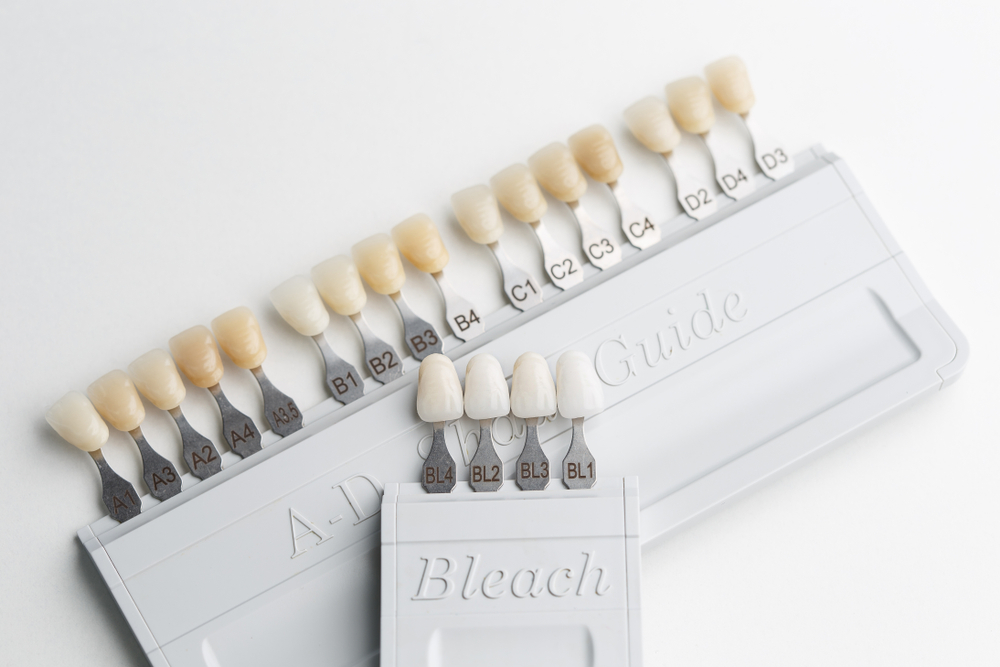When considering cosmetic options to enhance your smile, dental veneers often come up as a popular and effective solution. At BlueJay Family Dental in Council Bluffs, IA, Dr. Steven Fidone regularly educates patients about the choices available for improving the appearance of their teeth. Veneers are a customizable and long-lasting option, but not all veneers are created equal. There are several types, each with unique materials, benefits, and considerations. This blog aims to provide an in-depth overview of the different types of dental veneers to help you better understand what may suit your individual needs.

What Are Dental Veneers?
Dental veneers are thin shells designed to cover the front surface of teeth to improve their appearance. They are commonly used to correct issues such as discoloration, worn enamel, chips, gaps, or slight misalignments. Veneers are bonded to the teeth using dental cement and can last for years with proper care. They offer a way to achieve a uniform and natural-looking smile without extensive orthodontic or restorative procedures.
The process typically involves preparation of the tooth surface, taking impressions, and customizing the veneer to match the desired shape and color. Once bonded, veneers function just like natural teeth and are resistant to staining and wear, depending on the material used. The right type of veneer can make a significant difference in aesthetics and durability, which is why it’s important to explore the available options.
Porcelain Veneers: The Classic Choice
Porcelain veneers are among the most well-known and widely used types. Made from high-quality ceramic material, they offer a realistic tooth-like appearance and reflect light similarly to natural enamel. Porcelain is also stain-resistant, making it ideal for people who want long-lasting results without worrying about discoloration from coffee, tea, or wine.
One of the key benefits of porcelain veneers is their strength and longevity. With proper care, they can last 10 to 15 years or longer. However, the process of getting porcelain veneers typically involves some enamel removal to ensure a proper fit. This makes the procedure irreversible, and the teeth will always require some type of covering going forward. Despite this, many patients choose porcelain for its superior aesthetics and durability.
Composite Resin Veneers: A More Affordable Alternative
Composite resin veneers are another common type, made from a tooth-colored material similar to what’s used in dental bonding. Unlike porcelain veneers, which are crafted in a lab and then applied, composite veneers can often be placed in a single visit. This is because the material is sculpted directly onto the tooth and hardened using a special light.
While composite veneers are more affordable and involve minimal tooth preparation, they don’t usually last as long as porcelain. They’re also more prone to staining and chipping over time. However, they can be repaired relatively easily if damaged. For individuals looking for a budget-friendly or less invasive option, composite veneers can be a suitable choice, especially when used as a short- to medium-term cosmetic solution.
Lumineers and Minimal-Prep Veneers
Lumineers and other minimal-prep veneers are ultra-thin porcelain veneers designed to require little to no enamel removal. They are often marketed as a reversible option since the natural tooth remains largely untouched. These veneers are particularly appealing to those who are nervous about the permanent nature of traditional veneers.
Although Lumineers can be a good fit for some patients, they are not ideal in every case. Because they are thinner, they may not fully mask dark stains or significant cosmetic flaws. Additionally, their durability may not match that of conventional porcelain veneers. The suitability of minimal-prep veneers depends heavily on the individual’s tooth shape, color, and overall dental health.
Temporary Veneers and Trial Smiles
Temporary veneers, also known as trial veneers or provisional veneers, are often used during the transition period before permanent veneers are placed. They give patients a preview of how their final smile might look and allow for minor adjustments before the final veneers are bonded. Temporary veneers are typically made from acrylic or composite material and are not meant for long-term wear.
While not a long-term option, temporary veneers play an important role in the overall veneer process. They provide an opportunity to evaluate aesthetics and function, ensuring patient satisfaction before committing to the final version. Temporary veneers can also protect the prepared teeth and maintain appearance while the permanent restorations are being crafted.
How to Choose the Right Type for You
Choosing the right type of veneer depends on several factors, including your budget, cosmetic goals, and oral health. Here’s a brief overview of how the different options compare:
Porcelain Veneers: Best for long-term, natural-looking results; more durable but require enamel removal.
Composite Veneers: More affordable and minimally invasive; easier to repair but less stain-resistant.
Lumineers/Minimal-Prep: Non-invasive; suitable for minor cosmetic issues but may not fully conceal discoloration.
Temporary Veneers: Used for trial purposes or short-term fixes; not suitable for long-term wear.
A thorough consultation with a dentist can help determine which type aligns best with your expectations and dental condition. Each type has its place depending on the situation, and understanding the nuances helps you make an informed decision.
Longevity, Care, and Maintenance
Regardless of which veneer type you choose, proper maintenance is key to ensuring their longevity. Brushing twice daily with a non-abrasive toothpaste, flossing regularly, and visiting your dentist for routine checkups will help maintain both your veneers and your natural teeth. Avoiding habits like biting on hard objects, using your teeth as tools, or consuming excessive amounts of staining foods can also preserve the veneers’ appearance.
Over time, even the most durable veneers may need to be replaced due to wear, chipping, or changes in your gum line. The better you care for your veneers, the longer they will retain their appearance and function. Proper oral hygiene and mindful behavior are essential, regardless of whether you choose porcelain, composite, or another material.
Whether you’re just starting to explore cosmetic dentistry or are ready to make a change, knowing the different types of dental veneers is a valuable first step. At BlueJay Family Dental in Council Bluffs, IA, Dr. Steven Fidone encourages patients to weigh their options carefully and prioritize long-term oral health alongside aesthetics when making a choice.
Resources:
Pini, N. I., De-Marchi, L. M., Gribel, B. F., & da Silva, R. G. (2012). Analysis of the smile esthetic in different age groups. Journal of Dentistry.
Peumans, M., Van Meerbeek, B., Lambrechts, P., & Vanherle, G. (2000). Porcelain veneers: a review of the literature. Journal of Dentistry.
Radz, G. M. (2011). Minimum thickness anterior porcelain restorations. Dental Clinics of North America.
